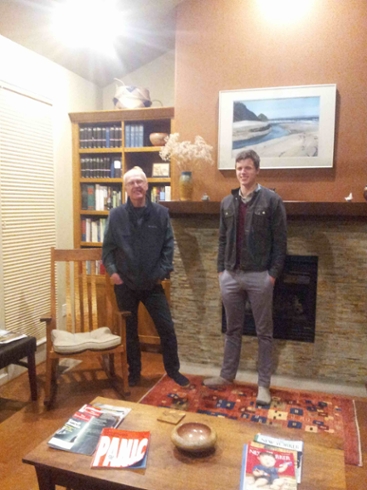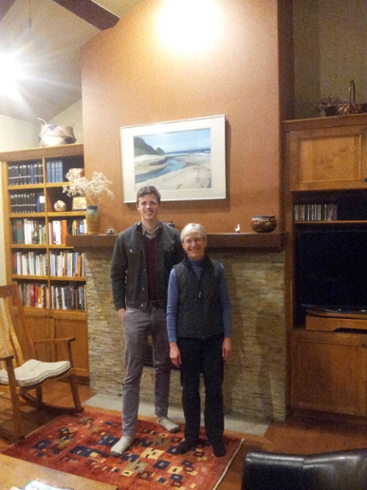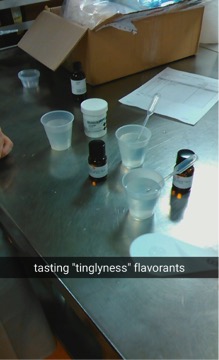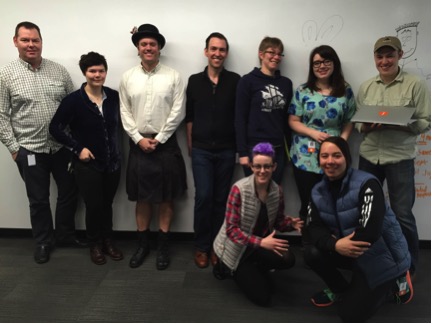Tags
"development"
Growth Management Department of Bend, Oregon: Philip Stallworth, Winter Shadow 2016

This past winter I had the opportunity to stay with two retired land use professionals, one a Reedie, and shadowed a number of employees at Bend’s Growth Management Department. Susan Brody, the Reedie, had formerly worked as the Director of Eugene’s Planning and Development Department, and as the Director of Oregon’s Department of Land Conservation and Development. Her husband, Al, is a retired land use attorney who had his own practice. Though they only moved to Bend two years ago, they are both active community members. As members of (different) Technical Advisory Committees, they each work closely with the Growth Management Department and project manager Brian Rankin to help expand Bend’s Urban Growth Boundary.
I applied to this externship because I was interested in a career that used technical skills and analytical thinking to develop impactful public policy. Discussions of Portland’s housing crisis and gentrification problems hinted that planning might be one such career. My experience in Bend unambiguously confirmed that hunch. The people I shadowed were dedicated to crafting the best Bend they (or more accurately, the public) could imagine, while working within the constraints of a municipal department.

Continue reading Growth Management Department of Bend, Oregon: Philip Stallworth, Winter Shadow 2016
Tableau Software: Justine Wang, Winter Shadow 2016

I headed to Seattle on Saturday the 9th to rendezvous with my host, former classmate, and Shadow contact person, Christina Gremore ’14. Christina had not only made the Shadow possible by petitioning her former boss, but also offered up her apartment for two lucky Reedies to stay for the duration of the Shadow. I was doubly lucky as an old classmate of hers, since she invited me to arrive two days early in order to have dinner and catch up with her before her business trip to Austin. Though we would only reunite for those few hours for the duration of the Shadow, I was reminded exactly how lucky I am to know her. I can only hope that one day in the near future, I will be just as accomplished as Christina in my personal and professional life.
Christina had arranged for us Reedies to Shadow her old department and thereby develop an understanding of the demands and growth potential at an entry-level job. Andrew Barker, Christina’s former boss and a manager in the Product Consulting department, graciously took the three of us Reedies under his wing for the entirety of our time at Tableau. Coming into the Shadow, I honestly didn’t expect too much from the experience. I already knew that I liked the product and believed in the company’s mission, so I was skeptical that I would learn much more from the experience. Andrew and the rest of the employees at Tableau quickly made me eat my words. Throughout my time at Tableau, I was blown away by the generosity, hospitality, and candor of the employees. It was one thing to have done my research on the company and another to be able to speak to people working there about their own career journeys. Andrew and the other employees were happy to talk about their time at Tableau and their experiences transitioning into gainful (or more satisfying) employment.
For the first day of the Shadow we received a general overview of Tableau as a company. Andrew talked about Tableau’s beginnings, its organizational structure, and gave us a tour of the Seattle campus after providing lunch. I found the tour to be one of the highlights of the Shadow since we got to learn more about how the different departments (and the people within them) work together. Taking the American Capitalism Sociology class has really impressed upon me the importance of organizational structures for employee satisfaction, so I was pleased to hear that Tableau is conscious of the potential perils of transitioning from a national business to a global corporation.
Continue reading Tableau Software: Justine Wang, Winter Shadow 2016
CCD Innovation Food and Beverage Science: Nicholas Egan, Winter Shadow 2016

The setup for our tasting experiment
I had not, in my life, expected to be able to point at a bottle of salad dressing at Safeway and say, “Oh cool, I made that.”
(‘Helped make that’ is definitely more proper, but sometimes you’ve just got to flex in the grocery store.)
Applying to CCD Innovation to understand the world of food innovation seemed, in my head, to suppose a certain scientific environment: one comprised of vast numbers of tiny bottles filled with hyper-concentrated-who-knows-what in ultra-sterile laboratories, logbooks filled to the brim with the anguish of hundreds of statisticians in the pursuit of ultimate flavor, and a grim, if regulated, corporate environment with masters of the tastebud denoting the desires of the mass public to lesser, flavoring-affiliated chemists.
Jama Software: Isabella Jorissen, Winter Shadow 2016

Me, 2nd from the left, with my host Chris McCraw, on my right, and the Support Ops team
Mustering up the will to get out of bed at 7 am on a rainy Monday in Portland is a lot easier if you have something to look forward to. I realize that 7 am isn’t early for some, but after two weeks of loafing around with my family, it was a bit of a rude awakening (pardon the pun). Each morning that week, the 99 bus shuffled me to the 6th and Yamhill, and from there I’d walk a few Portland-sized blocks to 2nd and Taylor.
At the corner of 2nd and Taylor is– you guessed it– Jama’s headquarters. The building owner has a penchant for old motorcycles, so the first-floor lobby sports four beautiful bikes (three Ducatis and a Norton, if memory serves). The second-floor lobby is no less eclectic, though that’s Jama’s doing. Anyone who visits the Jama office signs in with a living wall at their back and an inspirational mission statement on the wall to their right. A few of my favorite bits: “This is where we do our best work. It’s where we ask the tough questions and challenge the status quo… As an employee, partner, customer, or guest within our space, you are a member of Jama Nation… Let’s get to work.”
Jama Software focuses on one product, known as Jama. “Jama,” as it was put me by my externship host, “is a little bit of a Swiss army knife.” It’s often used by companies who have a lot of specifications, procedural oversight, or regulations to meet during the product development process. My externship host was Chris McCraw, team Lead for Support Ops. The Support Ops team, which served as a home base of sorts for me, manages any technical issues that might pop up on the customer side. They also maintain online a community where users can ask questions, read documentation, and learn how to make Jama work for them.
Continue reading Jama Software: Isabella Jorissen, Winter Shadow 2016
Gloopen, Alec Kosik, Winter Shadow 2016
I spent two weeks of this past winter break engrossed in a shadow like no other. No, my winter shadow with Gloopen did not involve much shadowing at all in fact. Instead, founders of Gloopen, Arun Sagar and Ranjan Chaudhuri, challenged us externs to develop our own startup. More accurately, they asked us to start a startup. Though there remains much to be done before we can release our project onto a Reed server, it is awesome that we can even speak about doing so—in the sense that we are amazed at what we accomplished in two weeks and terrified what will come of our idea.
Terrified too of the legal quarrels looming over every startup’s head, about which we had several conversations that I found particularly enlightening. Luckily such quarrels may not be that relevant to our current project but just to have a general idea of things like the patent process, with all of its unspoken requirements (such as hiring someone to write the patent), makes me a little more confident in being able to play the game of startups.
On the technical side, Arun told us about emerging technologies as well as software histories. Because I began programming after many technologies had been created it is always revealing to hear how and why those technologies were created. For example, the conglomeration of HTML, CSS, and JS was not made all at once but rather was built upon over time as demands for dynamic webpages were solved with JavaScript (JS) and demands for style were addressed by Cascading Style Sheets (CSS).
Continue reading Gloopen, Alec Kosik, Winter Shadow 2016
